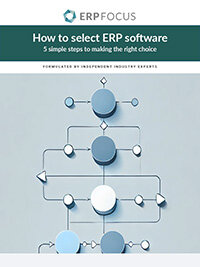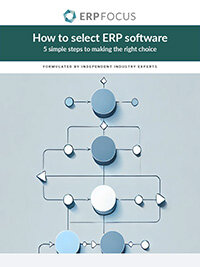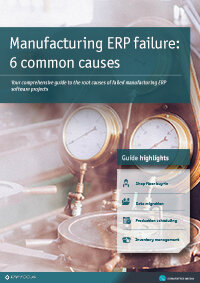ERP Failure: Making Dysfunctional Decisions
During the course of your ERP implementation, you will be faced with five to ten really critical strategic design decisions. These can be critical because they affect how your business will be run, they can be critical because they will impact everyone’s language and behavior, or they can be critical because they have been traditional sacred cows and change will create a great upheaval. As the first step to avoiding ERP failure, there needs to be consensus around making these ERP decisions – within the ERP implementation team, between the implementation team and the business unit, and between the business unit and the total organization.
If these five to ten critical decisions do not get made on time (according to the ERP project plan), or, get made on time, but are not agreed to by the business unit, then a whole host of other design decisions that cascade from the high level one also start falling behind. After a certain point, critical mass is reached, and the implementation date for ERP cannot be saved. But a missed implementation date is not a failed ERP implementation. ERP failure occurs when a project manager, or the ERP team, choose to plow ahead with a controversial decision, in order to remain on the project plan. When that happens, the downstream implications start getting swept under the rug. There are lots of surprises at ERP go-live, sometimes sufficient enough to disrupt business.
Looking for Danger Signals
How do you recognize if this is happening? The most obvious is that critical decisions are late according to the project plan, with no resolution in sight. If no decisions are overdue, then you and your subordinates should be able to articulate in a compelling fashion why a solution is the best. Next, if you haven’t told your executive sponsor about the decision because you don’t know exactly how he or she will react, you may be out on a limb. Lastly, if subordinate decisions that branch out from the high level one start becoming increasingly difficult, it could be because no one has thought through the high level decision.
Why does this happen? Two or more solutions may be so close in a pro/con comparison that choosing one over the other feels arbitrary. A business may not have the courage to change a bad business model. An executive may not want to deal with the political fallout. A dysfunctional organization may not know how to resolve conflict. Whatever the reason, a single decision deferred or avoided can plant the seed that grows into a full scale ERP failure.
Making a decision about ERP takes zero time. Gathering facts relevant to a decision, orchestrating meetings to discuss decisions, communicating decisions, and getting feedback on decisions all take an enormous amount of time. Make sure your organization’s decision-making process is a healthy one, and that you have a clear-cut policy for escalating late decisions all the way to the C-level if necessary. Often, just threatening to escalate a decision is sufficient to change behavior.
Free white paper

How to Select ERP
Learn to select your ERP in 5 easy steps by following our expert's advice

Featured white papers
-

Manufacturing ERP Failure: 6 Common Causes
Get your comprehensive guide to the causes of manufacturing ERP failure
Download
Related articles
-

Top 10 causes of ERP implementation failure (and how to avoid it)
Few people in an organization ever understand how difficult an ERP implementation is, and how a f...
-

Secret KPI: Why Your ERP Implementation Team Matters More Than Software
Learn how Godlan ensures successful ERP implementation for manufacturers with proven strategies &...
-

9 hidden ERP costs that can blow your implementation budget
Discover critical cost areas of your ERP project that can wreck your budget

